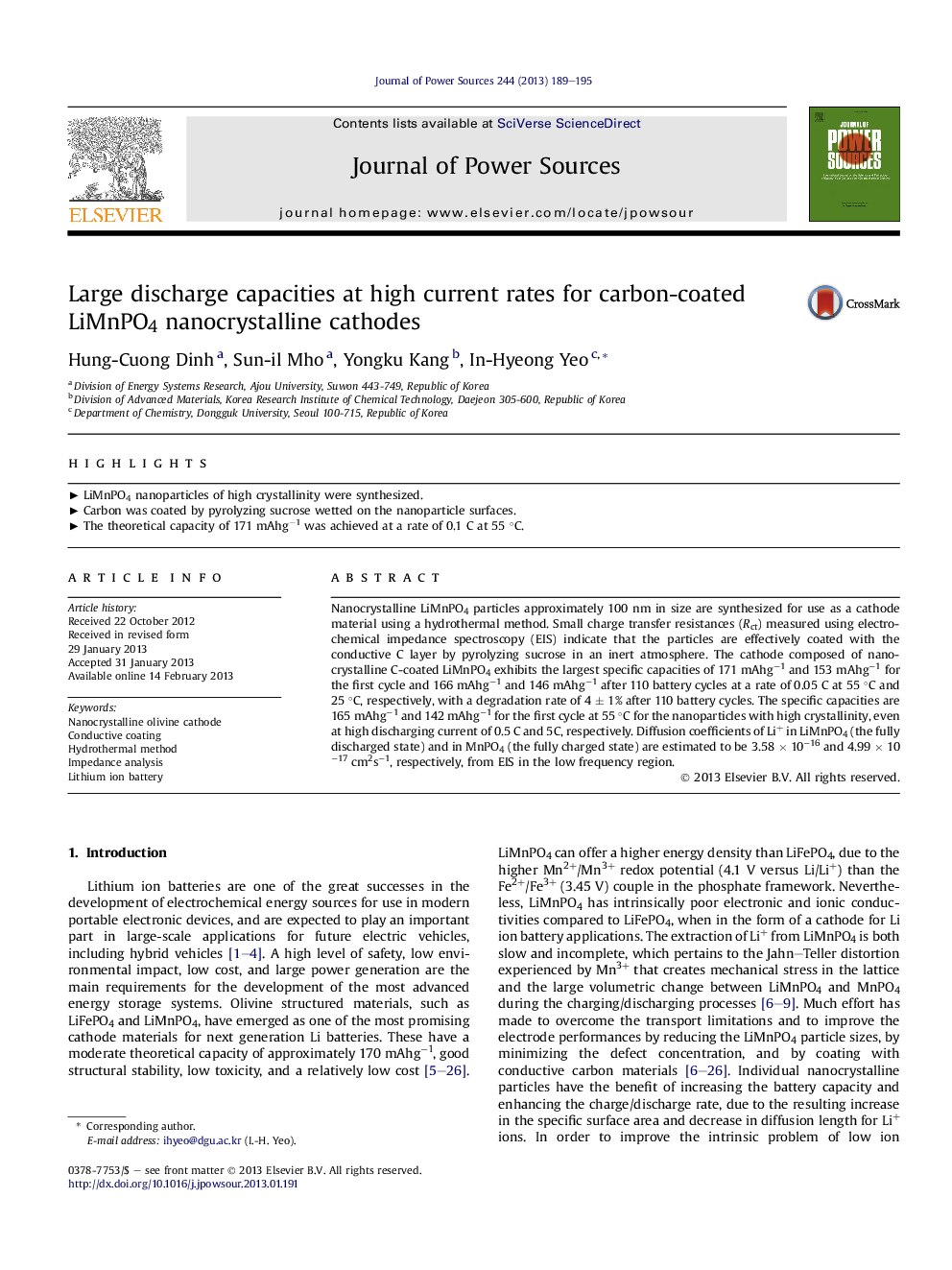| Article ID | Journal | Published Year | Pages | File Type |
|---|---|---|---|---|
| 1287462 | Journal of Power Sources | 2013 | 7 Pages |
Nanocrystalline LiMnPO4 particles approximately 100 nm in size are synthesized for use as a cathode material using a hydrothermal method. Small charge transfer resistances (Rct) measured using electrochemical impedance spectroscopy (EIS) indicate that the particles are effectively coated with the conductive C layer by pyrolyzing sucrose in an inert atmosphere. The cathode composed of nanocrystalline C-coated LiMnPO4 exhibits the largest specific capacities of 171 mAhg−1 and 153 mAhg−1 for the first cycle and 166 mAhg−1 and 146 mAhg−1 after 110 battery cycles at a rate of 0.05 C at 55 °C and 25 °C, respectively, with a degradation rate of 4 ± 1% after 110 battery cycles. The specific capacities are 165 mAhg−1 and 142 mAhg−1 for the first cycle at 55 °C for the nanoparticles with high crystallinity, even at high discharging current of 0.5 C and 5C, respectively. Diffusion coefficients of Li+ in LiMnPO4 (the fully discharged state) and in MnPO4 (the fully charged state) are estimated to be 3.58 × 10−16 and 4.99 × 10−17 cm2s−1, respectively, from EIS in the low frequency region.
► LiMnPO4 nanoparticles of high crystallinity were synthesized. ► Carbon was coated by pyrolyzing sucrose wetted on the nanoparticle surfaces. ► The theoretical capacity of 171 mAhg−1 was achieved at a rate of 0.1 C at 55 °C.
